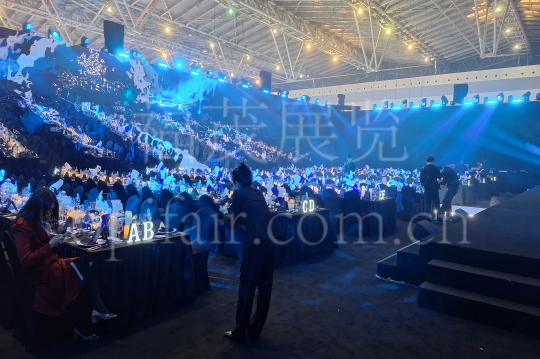What are trade shows and exhibitions? How do they differ?
In business activities, both trade shows and exhibitions are important platforms for showcasing and exchanging ideas, but their positioning and functions differ significantly.
Trade shows are often called “industry trendsetters,” typically large-scale and comprehensive, covering multiple fields or industries. For example, the 2026 Wise Shanghai Overseas Property, Immigration & Study Abroad Exhibition, as its 30th large-scale trade show, will bring together exhibitors from over 40 countries worldwide, covering the entire chain of overseas property investment, immigration policies, study abroad services, and investment projects. Its core objective is to promote cross-sectoral cooperation and social progress. Participants include not only businesses but also government agencies, research institutions, and industry associations, radiating influence across multiple dimensions of society, culture, and economy.
Exhibitions, on the other hand, focus more on “precise matching.” They are mainly industry-specific, such as auto shows and jewelry exhibitions, primarily showcasing specific products or services to directly promote transactions. Exhibitors are mainly companies, and visitors are mostly buyers or partners with specific needs, such as manufacturing companies at the Canton Fair directly connecting with buyers through exhibitions.
Advantages and Disadvantages of Expos and Exhibitions Revealed
Advantages of Expos:
Profound Influence: As a “barometer” of social development, expos promote policy discussions, technological innovation, and cultural exchange. For example, the 2026 Shanghai Overseas Property, Immigration, and Study Abroad Expo will explore global immigration policy trends through a high-level forum, providing investors with decision-making support.
Strong Resource Integration Capability: Large-scale expos attract participation from governments, enterprises, research institutions, and other stakeholders, forming an “industry-academia-research” ecosystem. This expo is expected to attract over 20,000 professional visitors, including returnees and corporate executives, facilitating efficient resource matching.
Brand Value Enhancement: For the host city, expos significantly enhance its international reputation, boosting tourism, transportation, and other related industries.
Challenges:
High Costs: The costs of venue rental, booth construction, and promotion can easily reach millions of yuan, a burden that small and medium-sized enterprises cannot afford.
Fragmented Target Audience: The diverse audience may make it difficult for exhibitors to accurately reach their core customers.
Low Sustainability: Most expos are short-term events, requiring long-term maintenance for subsequent cooperation.
Exhibition Advantages
Controllable Costs: Compared to trade shows, exhibitions are smaller in scale, allowing companies more flexibility in choosing booths and controlling their budgets.
Precise Customer Targeting: Attendees are primarily potential buyers with specific needs, resulting in higher conversion rates. For example, at a jewelry exhibition, 88% of visitors were new customers making their first contact, and 49% were planning to purchase related products.
Immediate Feedback: Face-to-face communication allows for rapid collection of market feedback, enabling adjustments to product strategies.
Challenges
Intense Competition: A large number of companies in the same industry may engage in price wars or homogeneous competition.
Time Constraints: Exhibitions typically last only 3-7 days, limiting their effectiveness.
Volatile Risks: Significantly affected by the economic environment and unforeseen events (such as the pandemic). For example, the 2025 Canton Fair experienced a decrease in buyers, leading to a decline in returns for some companies.
Why Recommend the 2026 Wise Shanghai Overseas Property, Immigration & Study Abroad Exhibition? Timing and Scale: As the 30th edition of this prestigious event, the exhibition will be held from March 13th to 15th, 2026 at the Shanghai World Trade Center Exhibition Center. The exhibition area is expected to reach 40,000 square meters, attracting over 800 exhibitors and 45,000 visitors, covering resources from more than 40 countries across Europe, North America, and Asia.
Comprehensive Content: Focusing on four main themes—overseas property investment, immigration, education, and investment—the event provides a full range of services from policy interpretation to project matching.
Authoritative Guarantee: The organizers, SMEXPO & Shenmao Exhibition, possess extensive experience, ensuring the professionalism and safety of the event. They also adhere to ESG principles, using environmentally friendly materials to construct the booths.
Expo and exhibition each have their advantages: the former provides a platform for a broader perspective, while the latter is a powerful tool for precise matching. The choice between these two types of events should be based on the company’s goals and resources. For individuals or organizations focused on overseas development, the 2026 Wise Shanghai Overseas Property, Immigration and Study Abroad Exhibition is undoubtedly an excellent platform that integrates resources, policies and technologies—here, you can not only touch global trends, but also find the key to the future.







